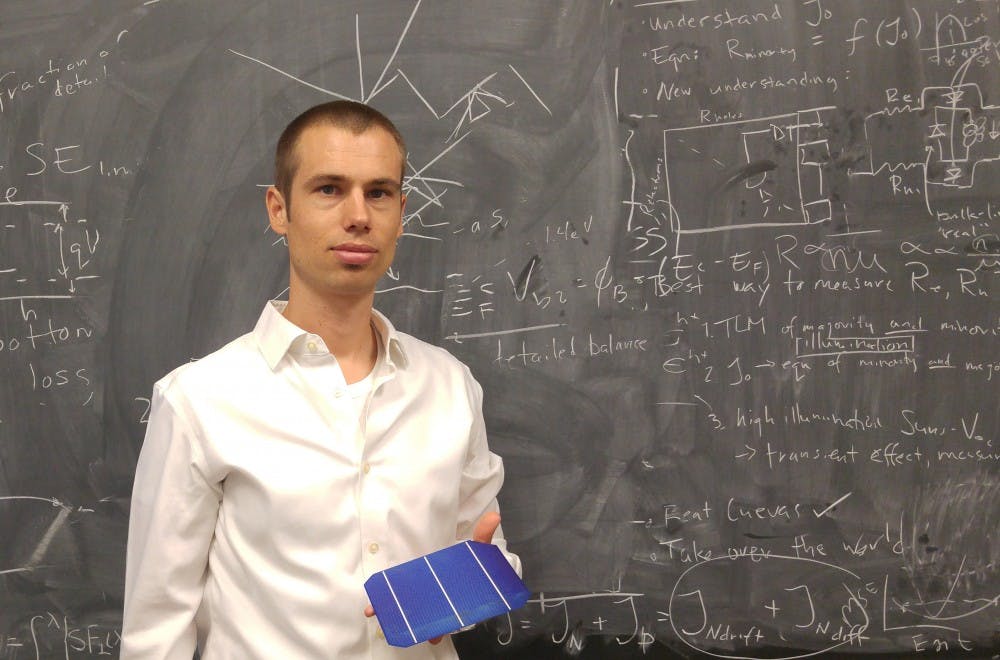Access to clean and efficient energy is an increasingly demanding issue the global population needs to face, and recent government funding to ASU is intended to address these challenges.
ASU researchers recently received $3.75 million from the U.S. Department of Energy as part of the SunShot Initiative and the Photovoltaic Research and Development funding program, abbreviated as PVRD.
The funding program aims to “apply advances in the fundamental science of photovoltaic materials to improve cell and module performance, improve service lifetime and reduce manufacturing costs,” according to the Department of Energy’s website.
Solar panels consist of individual solar cells that collectively gather and convert solar energy to be used as electricity. While solar panels are a clean alternative to fossil fuels, their cost and efficiency limit practicality.
“We are going to have an aluminum sheet running underneath the cells with little dimples coming up, connecting to the positive terminal and the negative terminal," Zachary Holman, who leads the ASU SunShot research, said.
He said his panels are unique as they use aluminum rather than silver, which is equally as conductive but much more affordable.
Each one of the five ASU projects funded under the initiative address separate limitations in solar energy. One of the significant limitations directly affecting solar research at ASU campuses is the problem of overheating, Holman said.
“Basically (the panels) work about three degrees celsius higher than the ambient temperature on bright, sunny days," Govindasamy Tamizhmani, another one of the ASU solar researchers, said. "And when the temperature of the solar panel goes up, the performance goes down. Our goal in this project is to keep the temperature raised as low as possible using thermally conductive back sheets."
The lower the temperature, the higher the efficacy and efficiency of the panels, he said.
ASU also received grant funding to further investigate the software end of solar energy.
Dragica Vasileska, a professor at the Ira A. Fulton Schools of Engineering, is leading the ASU research on that front.
“[The software] will change solar technology in a way that we can design solar cells to have a longer lifespan," she said. "Because if we understand the reliability issues with solar cells, then we can design them so they can last longer."
Vasileska is cautiously optimistic about the future of solar research at ASU.
"What I would like to see in the solar research at ASU is ... more coordinated research because there are many people that are working but don't know what they are working on," Vasileska said. "And I think we have the critical mass to be the leading center for solar research in the United States."
Reach the reporter at jpleona1@asu.edu or follow @jpleonard123 on Twitter.
Like The State Press on Facebook and follow @statepress on Twitter.




